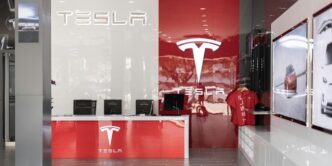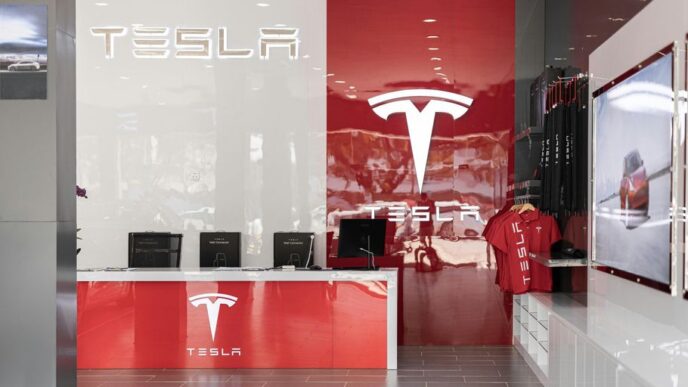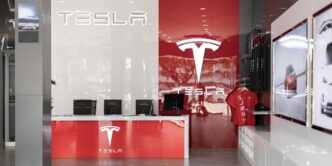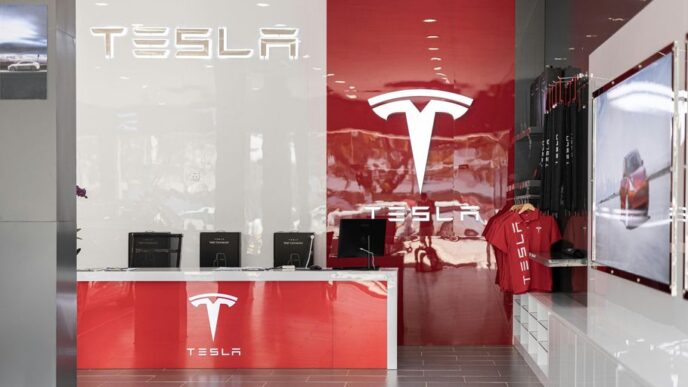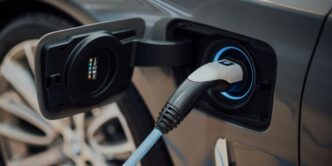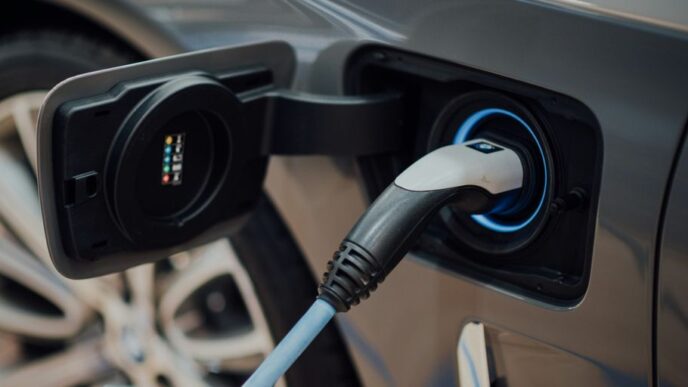Electric vehicles (EVs) are no longer a futuristic concept but a rapidly growing sector that is redefining the global automotive industry. Driven by technological advancements, environmental concerns, and supportive government policies, the adoption of EVs is accelerating at an unprecedented rate. This comprehensive report provides a detailed analysis of the current state of the electric vehicle industry, focusing on recent vehicle launches, significant advancements in battery technology, and the various government incentives designed to encourage the transition to electric mobility.
The Surge in Electric Vehicle Launches
The electric vehicle market has seen an explosion of new models across various segments, from affordable mass-market cars to luxury vehicles and commercial trucks. Automakers are aggressively expanding their EV portfolios to meet the growing demand and comply with stringent emissions regulations.
1. Major Automakers Embrace Electrification
Several major automakers have announced ambitious plans to electrify their vehicle lineups, with many committing to becoming all-electric within the next two decades.
General Motors (GM): GM has pledged to offer 30 all-electric models globally by 2025 and aims to phase out internal combustion engine (ICE) vehicles by 2035. The Chevrolet Bolt, one of GM’s flagship EVs, has been a popular choice in the affordable EV segment. In 2023, GM introduced the Chevrolet Silverado EV, an all-electric pickup truck designed to compete with traditional gas-powered trucks, offering a range of over 400 miles on a single charge.
Ford: Ford has also made significant strides in electrification with its Mustang Mach-E, an electric SUV that has received widespread acclaim for its performance and design. In addition, Ford launched the F-150 Lightning in 2022, an electric version of its best-selling F-150 pickup truck. The F-150 Lightning has been a game-changer in the EV market, appealing to traditional truck buyers with its impressive range, towing capacity, and competitive pricing.
Volkswagen (VW): Volkswagen Group is investing heavily in its EV portfolio, with a commitment to becoming the world’s leading electric vehicle manufacturer. The ID.4, VW’s first all-electric SUV, has been well-received in key markets like Europe and North America. VW has also announced plans to produce over 70 electric models by 2030, with an aim to sell 26 million EVs by that time.
Tesla: Tesla remains a dominant player in the EV market, known for its cutting-edge technology and high-performance electric vehicles. The Model 3 and Model Y have continued to lead sales in the EV market, while the Cybertruck, set for release in 2024, is expected to revolutionize the electric pickup segment. Tesla’s continued innovation, including advancements in autonomous driving and energy storage, keeps it at the forefront of the electric vehicle industry.
2. New Entrants and Startups Disrupting the Market
In addition to established automakers, several startups are entering the EV market, offering innovative designs and technologies that challenge traditional automotive norms.
Rivian: Rivian, an American startup, has made headlines with its all-electric R1T pickup truck and R1S SUV. These vehicles are designed for adventure, featuring off-road capabilities, a range of over 300 miles, and a focus on sustainability. Rivian’s vehicles have been praised for their performance, build quality, and innovative features, such as the Gear Tunnel and Camp Kitchen.
Lucid Motors: Lucid Motors, another American EV startup, has positioned itself as a competitor to Tesla in the luxury electric vehicle market. The Lucid Air, its flagship sedan, boasts a range of up to 520 miles on a single charge, the highest of any production EV to date. The Air’s luxurious interior, advanced driver assistance systems, and high-performance capabilities have garnered significant attention and set new standards in the luxury EV segment.
Nio: Nio, a Chinese electric vehicle manufacturer, has been rapidly expanding its presence in the global market. Nio’s lineup includes the ES8, ES6, and EC6 SUVs, all of which have received positive reviews for their design, technology, and battery swapping capabilities. Nio’s battery-as-a-service (BaaS) model, which allows customers to lease batteries separately from the vehicle, is an innovative approach that addresses concerns about battery degradation and upfront costs.
3. Expansion into Commercial and Public Transport Sectors
The commercial and public transportation sectors are also seeing a significant shift towards electrification, driven by the need to reduce emissions and operating costs.
Electric Trucks: Companies like Tesla, Rivian, and Nikola are leading the charge in the development of electric trucks. Tesla’s Semi, which is expected to enter production in 2024, promises significant savings in fuel and maintenance costs compared to traditional diesel trucks. Rivian has also secured major contracts, including a deal to supply Amazon with 100,000 electric delivery vans by 2030.
Electric Buses: The transition to electric buses is gaining momentum in cities around the world. BYD, a leading Chinese manufacturer, has become a dominant player in the electric bus market, with thousands of its buses operating in cities across Europe, North America, and Asia. Proterra, an American manufacturer, is also making strides in the electric bus market, offering buses with ranges exceeding 300 miles and lower total costs of ownership compared to diesel buses.
Advancements in Battery Technology: The Key to EV Success
Battery technology is at the heart of the electric vehicle revolution. Significant advancements in battery chemistry, energy density, and charging infrastructure are making EVs more practical and accessible to a broader range of consumers.
1. Lithium-Ion Batteries: Continuous Improvements
Lithium-ion (Li-ion) batteries remain the dominant technology in electric vehicles, thanks to their high energy density, relatively long cycle life, and declining costs.
Energy Density: Over the past decade, the energy density of Li-ion batteries has nearly doubled, allowing for longer ranges and smaller battery packs. According to a report by BloombergNEF, the energy density of commercially available Li-ion batteries reached an average of 250 Wh/kg in 2023, with projections of reaching 300 Wh/kg by 2025. This increase in energy density translates directly into longer driving ranges for electric vehicles.
Cost Reductions: The cost of Li-ion batteries has fallen dramatically, from around $1,100 per kilowatt-hour (kWh) in 2010 to approximately $137/kWh in 2023, according to BloombergNEF. This significant reduction in cost has made electric vehicles more affordable for consumers and has been a key driver of the increasing adoption of EVs. Experts predict that the cost will fall below $100/kWh by 2025, a critical threshold for price parity between EVs and internal combustion engine vehicles.
Thermal Management and Safety: Improvements in thermal management systems have enhanced the safety and longevity of Li-ion batteries. Automakers are increasingly using advanced cooling systems, solid-state electrolytes, and fire-resistant materials to prevent thermal runaway and improve overall battery safety. These advancements are particularly important as battery packs grow larger and more powerful.
2. Solid-State Batteries: The Next Frontier
Solid-state batteries are widely regarded as the next major breakthrough in battery technology, offering the potential for higher energy density, faster charging times, and improved safety compared to traditional Li-ion batteries.
Energy Density and Range: Solid-state batteries use a solid electrolyte instead of the liquid electrolyte found in Li-ion batteries. This allows for the use of lithium metal anodes, which have a much higher energy density than the graphite anodes used in conventional batteries. Companies like QuantumScape and Solid Power are at the forefront of solid-state battery development, with QuantumScape reporting successful test results showing energy densities of over 400 Wh/kg. If these batteries can be scaled for mass production, they could enable EVs to achieve ranges of over 500 miles on a single charge.
Safety and Longevity: Solid-state batteries are inherently safer than Li-ion batteries because they eliminate the risk of liquid electrolyte leakage and thermal runaway. Additionally, solid-state batteries are expected to have longer cycle lives, which could reduce the need for battery replacements and further lower the total cost of ownership for electric vehicles.
Commercialization Challenges: Despite their promise, solid-state batteries face significant challenges in terms of manufacturing scalability and cost. While several companies have announced plans to bring solid-state batteries to market by the mid-2020s, widespread adoption will likely require further technological advancements and reductions in production costs.
3. Fast Charging and Infrastructure Development
The development of fast-charging technology and the expansion of charging infrastructure are crucial to the widespread adoption of electric vehicles.
Ultra-Fast Charging: The latest advancements in fast-charging technology are reducing charging times to levels comparable to refueling a gasoline vehicle. For example, Tesla’s V3 Superchargers can deliver up to 250 kW of power, enabling a Model 3 to add 200 miles of range in just 15 minutes. Similarly, Electrify America’s ultra-fast chargers offer up to 350 kW, making it one of the fastest charging networks available.
Wireless Charging: Wireless or inductive charging technology is also being developed as a convenient alternative to plug-in charging. Companies like WiTricity and Qualcomm Halo are working on systems that allow vehicles to charge simply by parking over a charging pad. While still in the early stages of deployment, wireless charging could significantly improve the convenience of EV ownership, particularly in urban environments where space is limited.
Charging Infrastructure Expansion: The expansion of charging infrastructure is essential to support the growing number of electric vehicles on the road. According to the International Energy Agency (IEA), the number of public charging points worldwide increased by 45% in 2022, reaching over 1.8 million. In the United States, the Bipartisan Infrastructure Law, passed in 2021, allocates $7.5 billion for the construction of a national network of 500,000 EV chargers by 2030. This investment is expected to significantly improve charging accessibility and alleviate range anxiety among potential EV buyers.
Government Incentives and Policy Support
Government incentives and policy support play a crucial role in accelerating the adoption of electric vehicles. These measures include tax credits, rebates, subsidies, and regulatory mandates designed to reduce the upfront cost of EVs and encourage investment in clean transportation technologies.
1. Federal and State-Level Incentives in the United States
In the United States, a combination of federal and state-level incentives has been instrumental in driving the growth of the electric vehicle market.
Federal Tax Credits: The federal government offers a tax credit of up to $7,500 for the purchase of new electric vehicles, depending on the size of the battery and the manufacturer’s sales volume. However, the credit begins to phase out once an automaker sells 200,000 qualifying vehicles. This has already occurred for popular EV manufacturers like Tesla and GM, but there have been legislative efforts to extend or renew these credits as part of broader climate initiatives.
State Incentives: Many states offer additional incentives to complement the federal tax credit. For example, California, the largest EV market in the U.S., provides rebates of up to $2,000 through the Clean Vehicle Rebate Project (CVRP). Other states, such as New York, Colorado, and New Jersey, offer similar programs, with rebates ranging from $2,000 to $5,000. Some states also offer additional benefits, such as access to carpool lanes, reduced vehicle registration fees, and exemptions from sales tax on EV purchases.
Incentives for Commercial EVs: To promote the adoption of electric trucks and buses, several states have introduced specific incentives for commercial EVs. The California Hybrid and Zero-Emission Truck and Bus Voucher Incentive Project (HVIP), for example, offers substantial discounts on the purchase of zero-emission trucks and buses, with vouchers ranging from $45,000 to $315,000 per vehicle.
2. International Incentives and Regulations
Around the world, governments are implementing a range of incentives and regulatory measures to promote the transition to electric vehicles.
Europe: The European Union (EU) has set ambitious targets for reducing greenhouse gas emissions from the transportation sector, including a ban on the sale of new internal combustion engine vehicles by 2035. To support this transition, several EU member states offer generous incentives for EV purchases. Germany, for instance, provides subsidies of up to €9,000 for electric cars and €6,750 for plug-in hybrids. France offers similar incentives, with additional bonuses for low-income households and trade-in programs for older vehicles.
China: China, the world’s largest EV market, has implemented a range of policies to promote electric vehicle adoption. These include purchase subsidies, tax exemptions, and preferential treatment for EVs in major cities, such as exemptions from license plate lotteries and driving restrictions. China’s NEV (New Energy Vehicle) mandate, which requires automakers to produce a certain percentage of EVs, has been a key driver of the country’s rapid EV growth.
Norway: Norway is a global leader in electric vehicle adoption, with EVs accounting for more than 70% of new car sales in 2023. The Norwegian government has implemented a comprehensive set of incentives, including exemptions from value-added tax (VAT), reduced tolls, free public parking, and access to bus lanes. These incentives, combined with a strong charging infrastructure, have made Norway a model for other countries seeking to accelerate the transition to electric mobility.
3. Corporate Commitments and Fleet Electrification
In addition to government incentives, corporate commitments to electrification are playing an increasingly important role in the growth of the electric vehicle market.
Fleet Electrification: Major corporations are committing to electrifying their vehicle fleets as part of broader sustainability initiatives. Amazon, for example, has ordered 100,000 electric delivery vans from Rivian, with the goal of achieving net-zero carbon emissions by 2040. UPS and FedEx have also announced plans to transition their delivery fleets to electric vehicles, with substantial orders for electric trucks and vans from various manufacturers.
Automaker Commitments: Automakers are making bold commitments to phase out internal combustion engines and transition to all-electric lineups. Volvo, for instance, has announced that it will only sell electric vehicles by 2030, while Jaguar plans to become an all-electric luxury brand by 2025. These commitments reflect the growing recognition that the future of the automotive industry lies in electrification.
Conclusion
The electric vehicle industry is at a pivotal moment, with new launches, advancements in battery technology, and government incentives driving the transition to electric mobility. The rapid expansion of EV offerings, from affordable mass-market cars to luxury models and commercial vehicles, is making electric vehicles accessible to a broader range of consumers and businesses.
Significant advancements in battery technology, particularly in energy density, cost reduction, and safety, are addressing some of the key barriers to widespread EV adoption. The development of fast-charging infrastructure and the promise of solid-state batteries further enhance the appeal of electric vehicles, offering the potential for longer ranges and shorter charging times.
Government incentives and policy support remain critical to the growth of the EV market, providing the financial and regulatory framework needed to accelerate the transition from internal combustion engines to electric drivetrains. As governments and corporations around the world commit to reducing carbon emissions and combating climate change, the electric vehicle revolution is set to continue, reshaping the global automotive landscape for decades to come.



